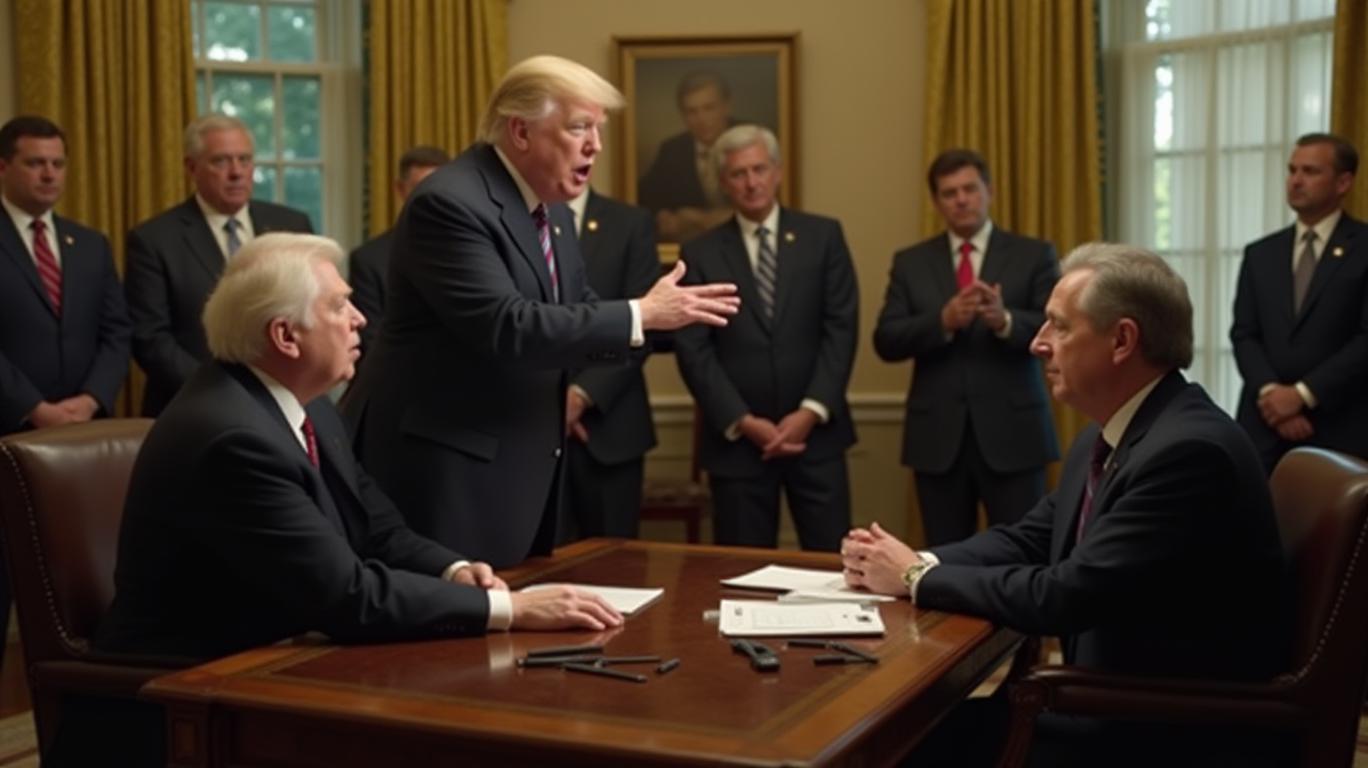Trump Pressures Powell: Cut Rates Now
In a post made on Truth Social shortly before Federal Reserve Chair Jerome Powell delivered his remarks today, President Donald Trump publicly called for an immediate interest rate cut—accusing Powell of political hesitation and urging decisive action amid what Trump characterized as a winning stretch for the U.S. economy.
Ask Aime: What impact will President Trump's call for an immediate interest rate cut have on the US economy and stock market?
“This would be a PERFECT time for Fed Chairman Jerome Powell to cut Interest Rates,” the President wrote on Truth Social. “He is always ‘late,’ but he could now change his image, and quickly. Energy prices are down, Interest Rates are down, Inflation is down, even eggs are down 69%, and Jobs are UP... CUT INTEREST RATES, JEROME, AND STOP PLAYING POLITICS!”
The message, posted just before Powell’s appearance, appeared to lay down a political marker in what’s becoming a high-stakes faceoff between the White House and the Federal Reserve. Trump framed the moment as ideal for monetary easing, citing falling inflation and surging employment figures, and accused Powell of dragging his feet for political reasons.

Powell: No Shift, Despite Political Pressure
Powell struck a noticeably different tone. He reaffirmed the Fed’s cautious and data-driven stance, signaling no change in direction despite growing political and market pressure.
While Powell did acknowledge that the administration’s tariff policies are proving “more inflationary and disruptive” than initially expected, he remained firm that the Fed is “well-positioned to wait for greater clarity before considering policy adjustments.” The Chair said it is still “too soon to note what will be the appropriate path” for rates.
Powell’s comments emphasized continuity: the Fed is not reacting to headline figures or political messaging but instead watching for persistent shifts in inflation, employment, and business investment.
Markets Stumble Amid Disconnect
Investors, however, appear less patient. The Dow was down more than 4%, while both the Nasdaq and S&P 500 have fallen nearly 5% in intraday trading. The sharp selloff suggests growing concern that the Fed may be misjudging the risks, or at the very least, staying sidelined too long in the face of volatility and policy uncertainty.
Much of that uncertainty now stems from within the government itself. With President Trump publicly campaigning for lower interest rates, markets are being pulled between political narratives and Powell’s more restrained policy signaling.
President Trump’s latest message revives a dynamic seen during his first term—direct pressure on the central bank to adopt looser monetary policy. And this time, the stakes are higher with tariffs driving price pressures and recession risks rising.
Powell, for his part, is holding the line. While he acknowledged that inflation tied to trade policy may last longer than previously forecast, he insisted that long-term inflation expectations remain “well-anchored.” For now, the Fed’s goal remains to prevent temporary price increases from turning into lasting inflation.
As markets slide and the President turns up the pressure, Powell is making it clear: the Fed won’t be rushed. But whether that calm will hold through campaign season and a volatile economic backdrop remains an open question.




